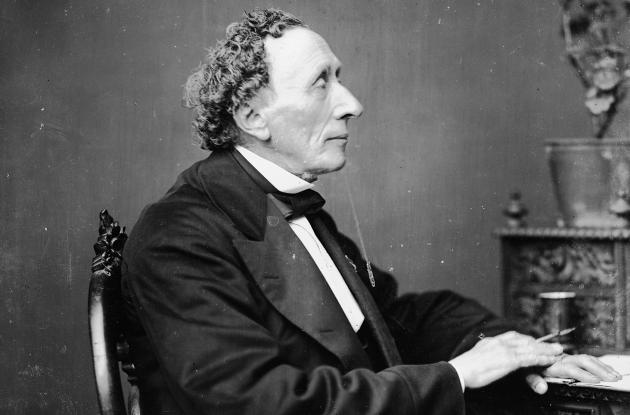The fairy tale author Hans Christian Andersen
Hans Christian Andersen's authorship covers a wide range of texts, but it was his fantastic fairy tales that really started his writing career.
Hans Christian Andersen (1805-75) is known all over the world for his fairy tales. However, they make up only a small part of his extensive authorship, which also involves poems, novels, travelogues and more. He was very careful to preserve his letters, diaries, notes, drafts and manuscripts, and a large collection of these are now at Royal Danish Library.
From his debut in 1835 and up until 1872, Hans Christian Andersen published more than 150 fairy tales and stories. In the years 1835-42 the first six booklets were published with the title Fairy Tales, Told for Children. Then in 1844, the first booklet of New Fairy Tales was published, which, aside from 'The Ugly Duckling', contained the three fairy tales 'The Angel', 'The Nightingale' and 'The Sweethearts'. The collection came in two editions that same year, which Hans Christian Andersen naturally saw as a great success.
The Tinderbox
'The Tinderbox', which is among the most famous of his fairy tales, was part of the first fairy tale collection with the title Fairy Tales, Told for Children, which was published in the years 1835-42.
The tale of the unscrupulous and headstrong soldier is based on an old Danish folk tale, and it was not only praise that Hans Christian Andersen received for his writing. For instance, poet Carsten Hauch wrote the following about the amoral soldier:
“In the first story, it is offensive that the soldier so utterly without conscience and gratitude kills the old woman in return for her help, even if she did it out of self-interest. They will say that the children do not think hard on this, that the childlike naiveté easily jumps over it. But the adults, who should also be able to read such stories with pleasure, think about it, and a wise child does not have to be very old before it does the same.
“
The Ugly Duckling
In many ways, you can mirror Hans Christian Andersen's life and career in the fairy tale 'The Ugly Duckling', where the duckling has to go through so much before it and its surroundings find out that it is truly a swan, and it can exclaim from the heart:
“I did not dream of so much happiness when I was the ugly duckling!
“
The story has often been perceived as autobiographical.
Hans Christian Andersen's collection in UNESCO's Memory of the World register of world cultural heritage
Royal Danish Library preserves a large collection of the poet's letters and manuscripts, which in 1997 were entered on UNESCO's Memory of the World list of world heritage.
